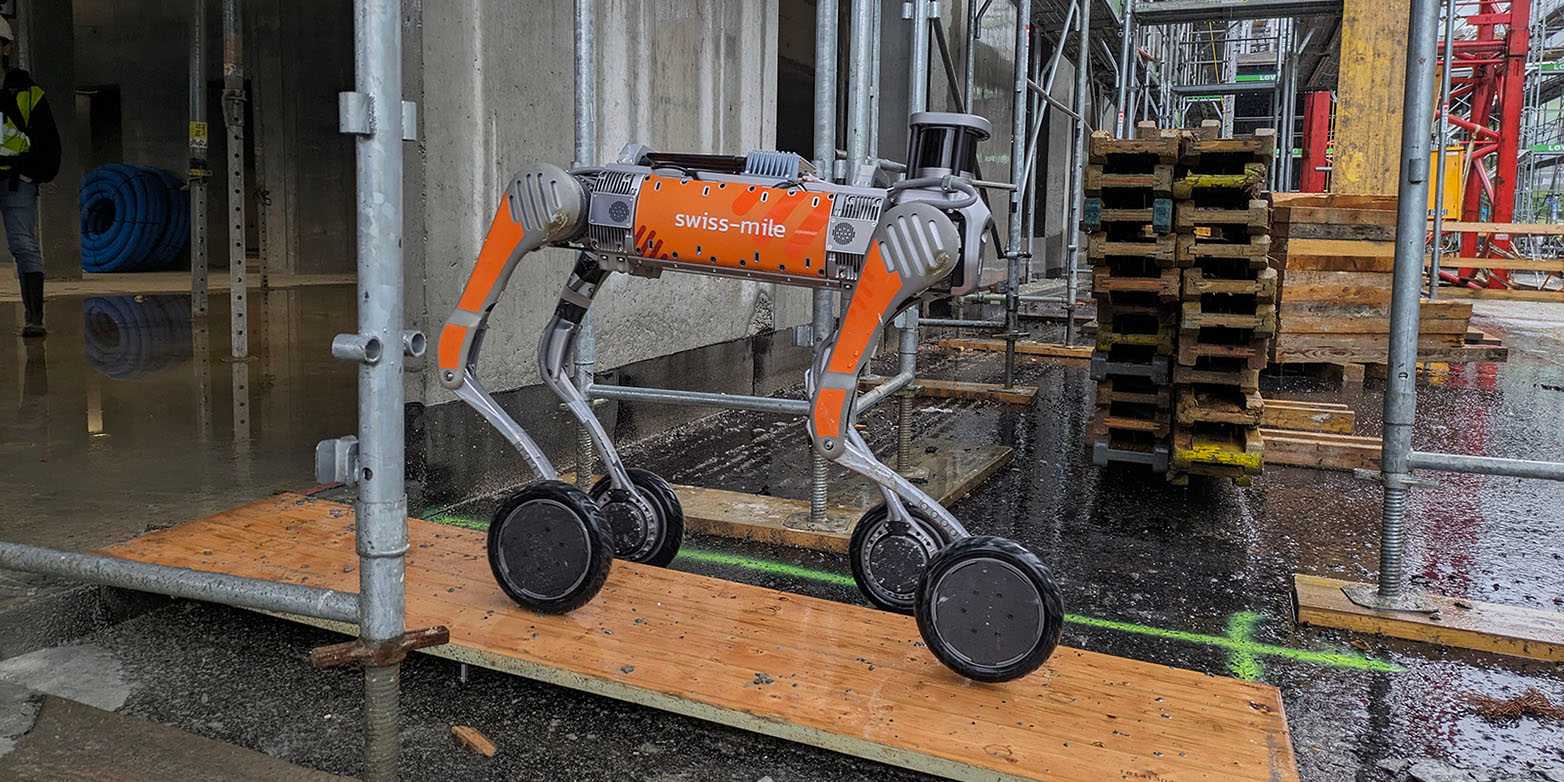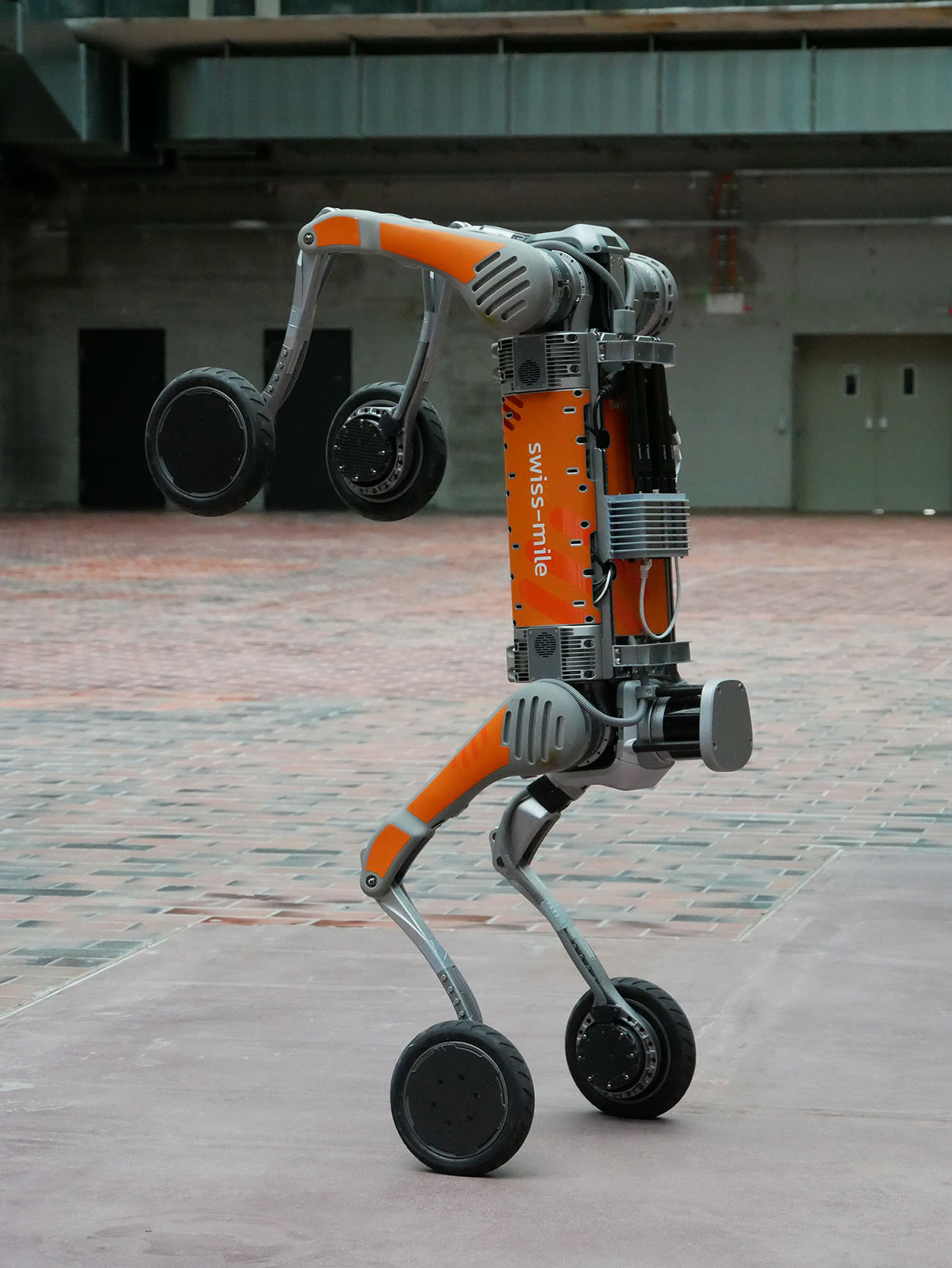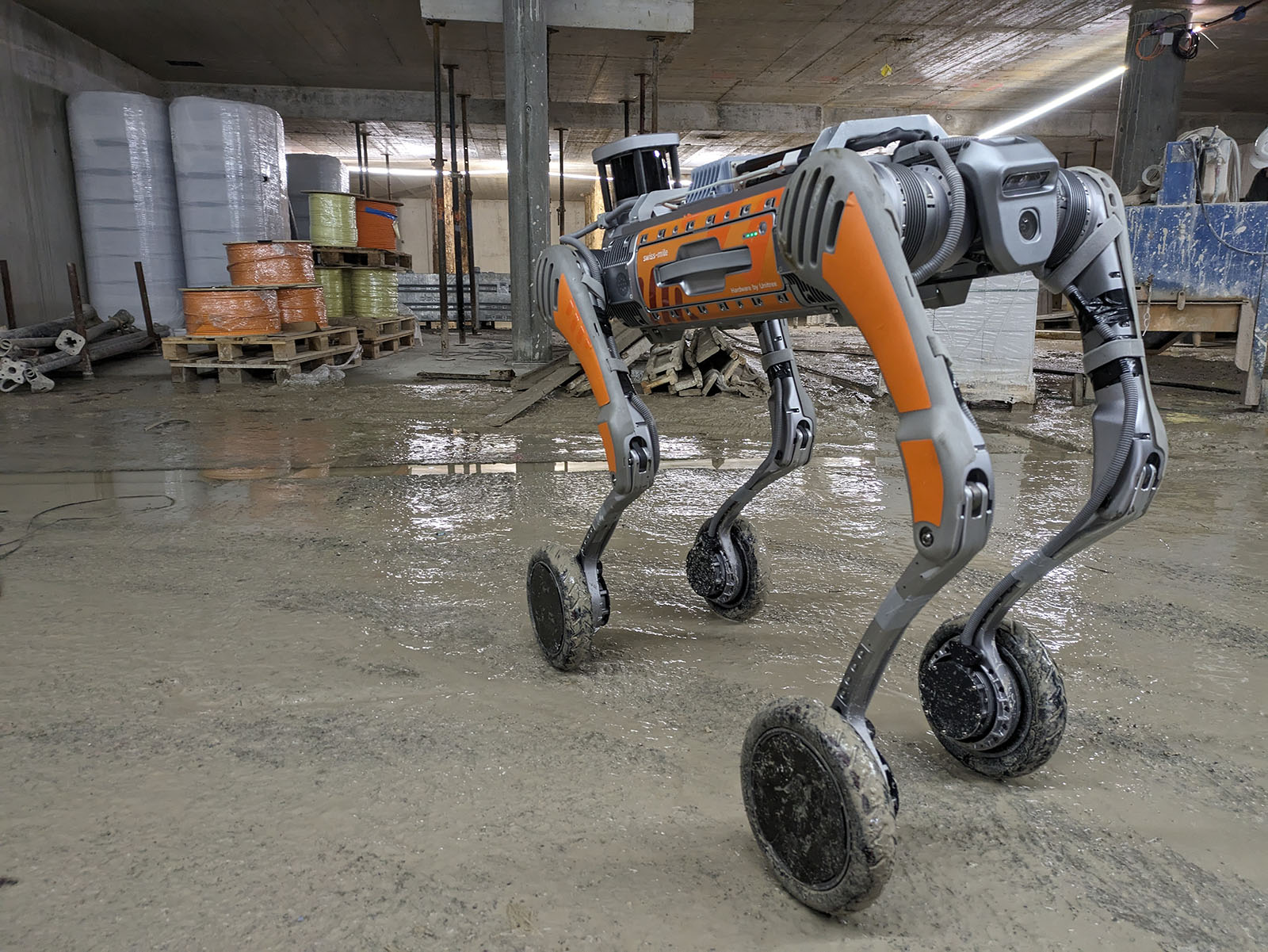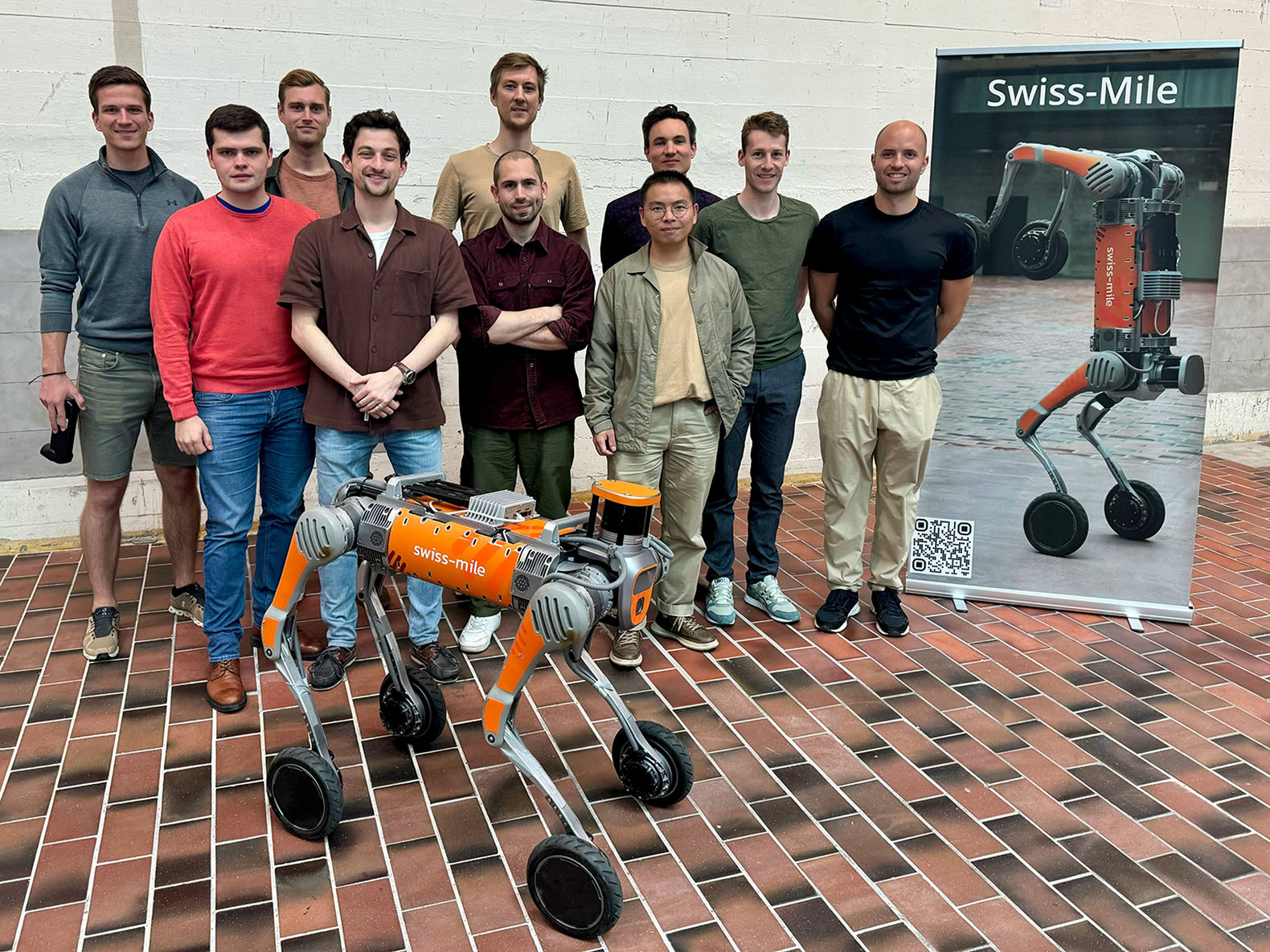An all-rounder on legs and wheels
Imagine a robot that can autonomously monitor a factory, effortlessly navigate stairs, and open doors — meet Milo, developed by ETH spin-off Swiss-Mile. Combining AI with advanced robotics, it boasts a wide range of applications.

We talked to Marko Bjelonic, Co-Founder of Swiss-Mile
Your robot looks like a dog on wheels – why wheels?
Our robot Milo embodies something that does not occur in nature. Until now, there were either robots on legs or wheels. But: in everyday life, people walking on legs use various objects on wheels to help them carry out certain tasks. So, we developed a robot with legs and wheels. It can climb stairs and stand on its hind legs to use the front legs like arms, for tasks such as lifting a parcel or pressing the lift button.
What can your robot be used for and where are the benefits?
Milo is extremely versatile and there are no limits to the ideas. At present, we are concentrating on areas of application that involve digitalisation. These include, for example, security patrols or machine monitoring. Such activities usually must be carried out around the clock, leading to high personnel costs and complicating recruitment for these tiring tasks. A robot can do this much cheaper, with greater endurance and precision, as it can process various sensors simultaneously. Milo's battery lasts six working hours but will be improved in the foreseeable future.
Milo's other potential applications are exciting. For example, we see huge potential on construction sites and in logistics. On construction sites, errors are often discovered late, which costs a lot of money and resources. With a digital image of the construction site, errors are recognised immediately, and material is located quickly and carried by Milo if necessary - up to 60 kg at a time. Milo can also open doors and can move easily both indoors and outdoors.

What technical challenges did you have to solve?
The big question was: How does a robot with legs and arms on wheels move? We couldn't copy this anywhere but had to visualise it ourselves, which was very difficult. On the one hand, the robot must be manoeuvrable on four wheels, but on the other hand, it also has to be able to move on two wheels so that the ‘arms’ are free for different tasks. The basic equipment also includes several cameras, three computers and laser sensors.
At Prof Marco Hutter's Robotic Systems Lab (RSL), we have integrated artificial intelligence from the very beginning. Our team at the RSL was the first to run this artificial intelligence on a real robot, which was a game changer for us. Milo could now work out by himself, how a robot should move on legs and wheels without us having to program it. Our team at ETH has refined this technology over several years. While our state-of-the-art AI provides significant advantages, imitators are emerging. Therefore, we must continue investing in this technology to maintain our position as a world leader.

Why should a customer choose your robot?
In addition to the autonomous robot, our digital platform is crucial for the customer. We employ digital twins of the real world to enhance our learning algorithms and create added value. The real robot constantly updates this digital twin. Through data analysis, we can detect anomalies in the real world and reflect them in the digital twin for our customers.
What does the future hold?
We are already working with various customers in the USA, Asia, and Europe. Over the next 1-2 years, we aim to partner with 5-10, or possibly more, customers to refine our solution. We are looking for companies that want to adopt these new technologies where it makes commercial sense. We tailor the robot in every aspect to ensure the customer receives a complete, customised solution. These projects are crucial for us to determine the capabilities our robot must possess. We aim to eventually deploy a robot that can address all of our customers' needs. Currently, we have 12 employees and plan to double this number by the end of the year.

Contact/Links:
Do you want to get more "News for Industry" stories?
external page Follow us on LinkedIn
Are you looking for research partners at ETH Zurich?
Contact ETH Industry Relations